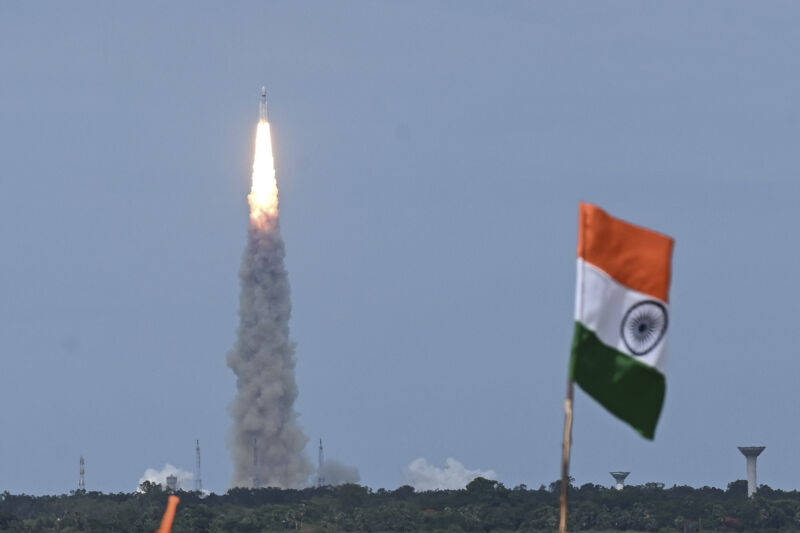
India took the first step toward its second attempt to land on the Moon on Friday with the launch of its Chandrayaan-3 mission from the Satish Dhawan Space Centre in the southeastern part of the country.
The spacecraft launched on the LVM-3 rocket, the heaviest lift vehicle in India's fleet. Liftoff came nearly three years to the date of the launch of the Chandrayaan-2 mission to the Moon. That launch successfully placed a spacecraft into lunar orbit, but a landing attempt was unsuccessful. The Indian space agency, ISRO, lost communication with its Vikram lander at about 2 kilometers above the lunar surface due to a software problem. It subsequently crashed into the Moon.
So the Indian space agency decided to learn from its mistakes and try again. The Chandrayaan-3 mission has eschewed the lunar orbiter, as the Indian spacecraft remains operational after three years. So this launch consisted of a propulsion module, a new Vikram lander, and a small rover named Pragyan.
Taking the long way
Instead of launching directly to the Moon, the spacecraft will follow a more circuitous but fuel-efficient route. It is scheduled to reach lunar orbit on August 5, setting the stage for a landing attempt as early as August 23. The Vikram lander will attempt to make a soft touchdown in the southern hemisphere at a latitude of about 69 degrees south.
To date, only the Soviet Union, the United States, and China have made soft landings on the Moon. India will attempt to become the fourth country to do so and is the first of as many as half a dozen missions that will attempt to land on the Moon during the next six months.
India has developed the Chandrayaan-3 mission on a shoestring budget, about $90 million. But it is important for the Indian space agency to demonstrate competence with this second attempt—especially as its neighbor China has flown a series of increasingly complex and successful lunar missions, including landing on the far side of the Moon and returning regolith samples to Earth. If successful, the Vikram lander would touch down further south than any previous lunar mission.
ISRO intends for the mission to survive for a "lunar day," or two Earth weeks, on the surface. The mission is carrying seven scientific payloads, including an instrument to measure seismic activity to better characterize the composition of the Moon and a spectrometer to determine the elemental breakdown of rocks and soil near the landing site.
Working with NASA
Friday's launch came less than a month after India and NASA moved to develop closer ties in spaceflight, particularly through lunar exploration, with India signing the Artemis Accords. India became the 27th country to sign the accords, a non-binding set of principles among like-minded nations that provides a vision for peaceful and transparent exploration of space.
Details about cooperation between the United States and India are not readily available, but this likely signals that India will participate in NASA's efforts to return humans to the Moon through the Artemis program. NASA Administrator Bill Nelson plans to travel to India later this year for meetings and discussions with Indian space officials and to hammer out broad objectives for a “strategic framework” for human spaceflight cooperation.
Nelson told Ars that working with India is notable because that nation is the only other signatory of the Artemis Accords working toward the capability to launch humans into orbit.
"The fact that they are a nation that intends in the future to fly their own astronauts, is that significant? The answer is yes," Nelson said. "I think it’s of significance that a major country that’s not considered aligned with the US (is) a signatory."
reader comments
52 with